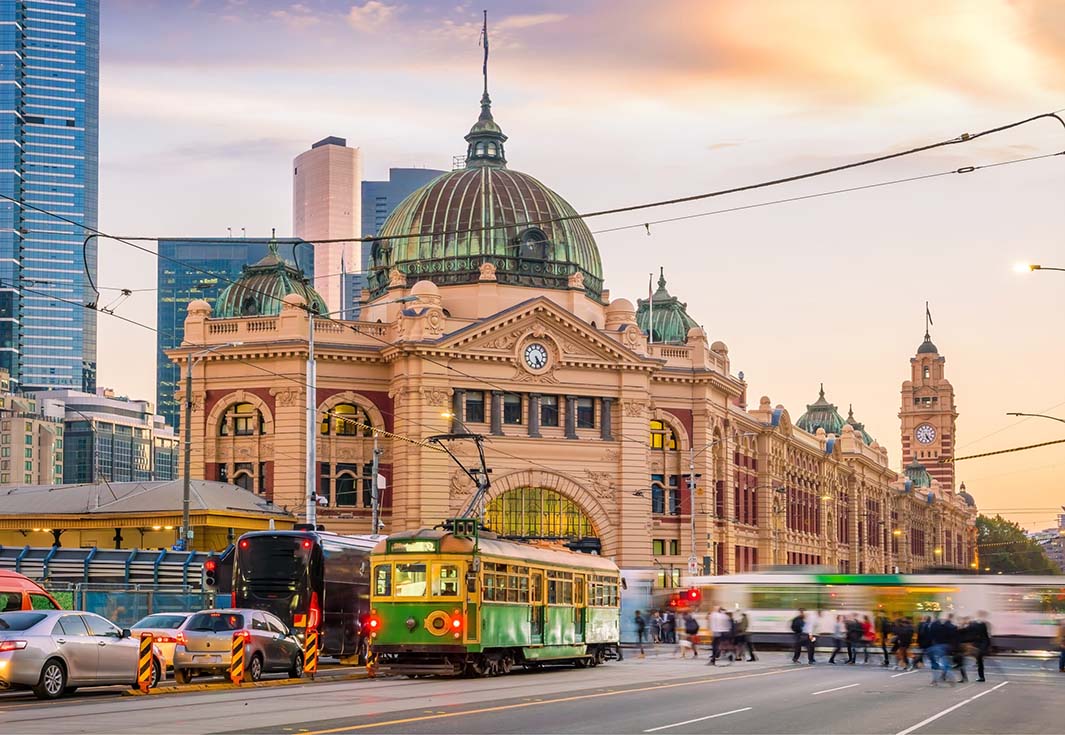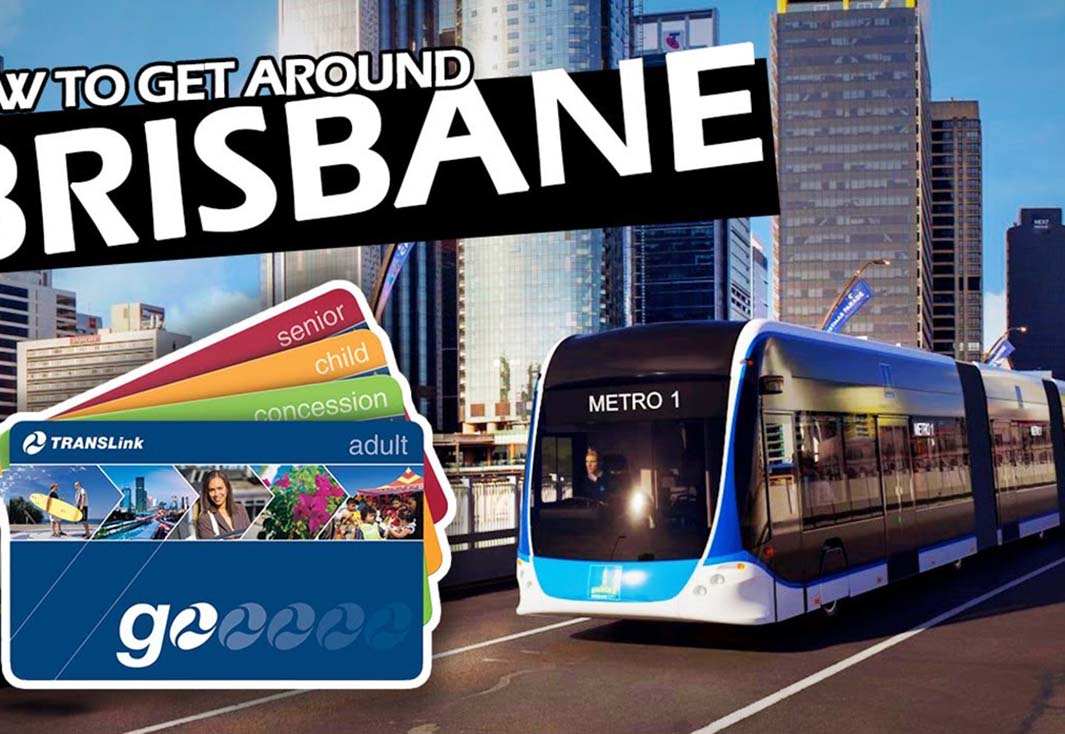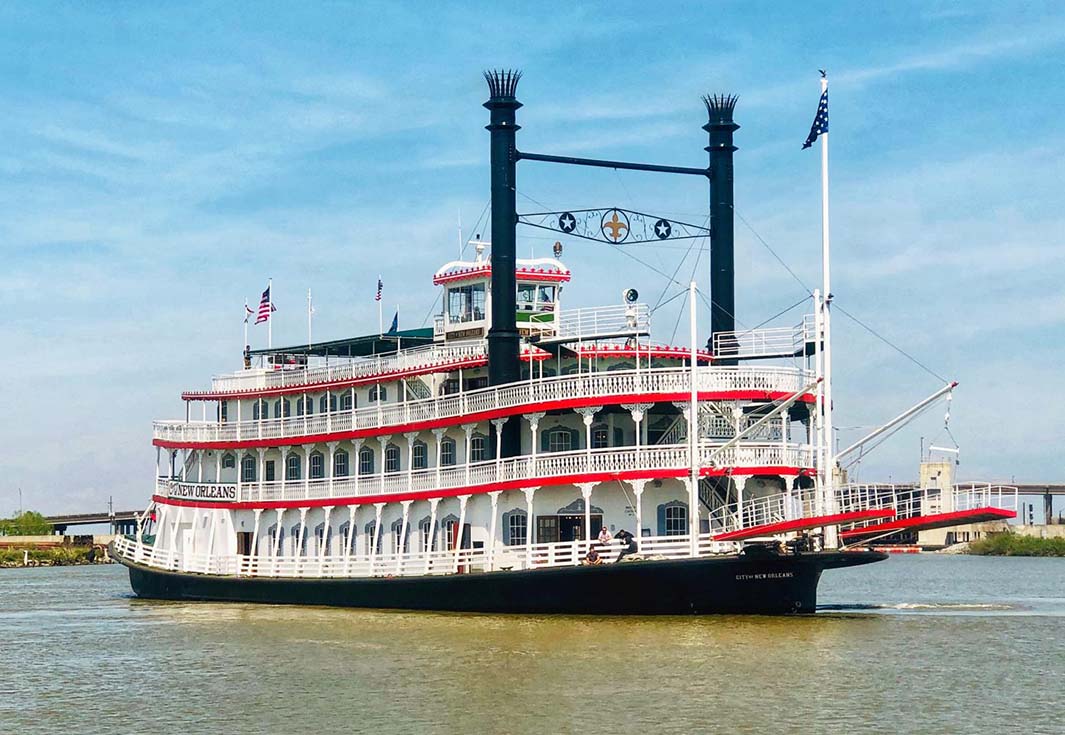I understand the importance of efficient and reliable transportation. Melbourne, the cultural capital of Australia, offers a diverse range of transportation options to help visitors navigate the city with ease. In this comprehensive guide, I will delve into the various modes of transportation available in Melbourne, along with practical tips and recommendations for each.
1. Trams
Melbourne is famous for its extensive tram network, which is the largest in the world. Trams are an iconic feature of the city’s transportation system and offer a convenient way to explore Melbourne’s attractions.
To ride the tram, travelers need to purchase a myki card, Melbourne’s smartcard ticketing system. The myki card can be loaded with credit and used across all public transport modes in Melbourne. When boarding the tram, passengers must touch their myki card on the reader located inside the tram. Remember to touch off when exiting the tram to ensure accurate fare calculation.
Keep an eye out for tram stops marked with distinctive signs along the roadside. Trams operate on different routes, so make sure to check the route number and destination displayed on the front of the tram before boarding. Additionally, tram travel within the Melbourne CBD and Docklands precinct is free, so take advantage of this complimentary service for short trips within the city center.
2. Train
Melbourne’s train network connects the city center with its outer suburbs and surrounding regions. Trains are a fast and efficient way to travel longer distances within Melbourne and beyond.
Similar to trams, you’ll need a myki card to travel on Melbourne’s trains. Purchase your myki card and top it up with credit before boarding the train. Be sure to touch on and off at the designated readers on train platforms. Timetables and route maps are available at train stations and online to help plan your trip.
Check the timetable for train services, especially if traveling during off-peak hours or on weekends when services may be less frequent. Avoid traveling during peak commuter times, as trains can be crowded. If you have luggage, look for designated areas within the train carriage or near the doors to ensure a comfortable journey for yourself and fellow passengers.
3. Bus
Melbourne’s bus network complements its tram and train services, providing connections to areas not served by rail. Buses operate across the city and suburbs, offering a convenient way to reach destinations off the beaten track.
Like trams and trains, travelers need to use their myki card to board Melbourne’s buses. Simply touch your myki card on the reader when entering the bus, and remember to touch off when exiting. Bus stops are clearly marked with route numbers and timetables to assist passengers.
Plan your bus journey in advance by checking the timetable and route map to ensure you catch the right bus. Some bus routes may have limited services on weekends or public holidays, so double-check the schedule before traveling. Be mindful of peak hour traffic, which may cause delays to bus services, particularly during rush hour.
4. Bicycle:
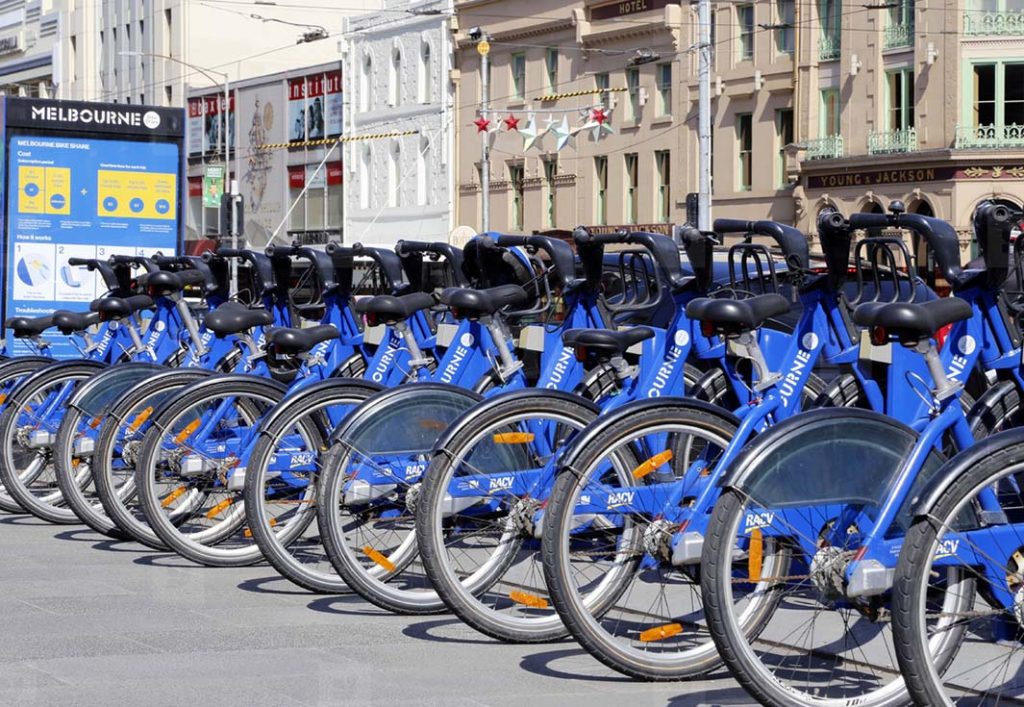
Melbourne is a bike-friendly city with dedicated bike lanes and shared paths throughout the urban area. Cycling is a great way to explore the city at your own pace while staying active.
Cycling is a popular and eco-friendly way to explore Melbourne’s neighborhoods and scenic routes. The city boasts numerous bike paths and dedicated lanes, making it easy for cyclists to navigate the urban landscape.
Travelers can rent bikes from various bike rental companies or utilize Melbourne’s bike-share scheme, Melbourne Bike Share. To access Melbourne Bike Share, simply register for a membership online or via the mobile app. Once registered, locate a bike station, enter your membership details, and unlock a bike using the provided code or card.
Two popular bike rental platforms in Melbourne are Melbourne Bike Share and Rentabike. Melbourne Bike Share operates bike stations throughout the city, allowing users to rent and return bikes at their convenience. Rentabike offers a wide range of bikes for rent, including mountain bikes, electric bikes, and tandem bikes, with delivery and pickup services available.
Before setting out on your cycling adventure, familiarize yourself with Melbourne’s bike lanes and shared paths. Always wear a helmet while riding, as it is a legal requirement in Australia. Keep an eye out for pedestrians and vehicles, and obey traffic signals and signs for a safe and enjoyable ride.
5. Car Rental
While public transportation is abundant in Melbourne, some travelers may prefer the flexibility and convenience of renting a car to explore the city and its surrounding areas. Car rental companies operate at Melbourne Airport and various locations throughout the city, offering a range of vehicles to suit every budget and preference.
Renting a car in Melbourne is straightforward. Travelers need to provide a valid driver’s license, credit card, and proof of insurance when picking up their rental vehicle. Most car rental companies offer online booking options, allowing travelers to reserve their vehicle in advance and pick it up upon arrival.
Some well-known car rental platforms operating in Melbourne include Hertz, Avis, Budget, and Europcar. These companies offer a diverse selection of rental vehicles, including compact cars, SUVs, and luxury vehicles, with competitive rates and flexible rental terms.
Before embarking on a road trip in Melbourne, familiarize yourself with the local road rules and regulations. Keep to the left side of the road and adhere to speed limits and traffic signs. Consider purchasing a GPS or using a navigation app to navigate Melbourne’s streets and highways with ease. Additionally, be mindful of parking restrictions and fees, especially in the city center and popular tourist areas.
Navigating Melbourne’s Public Transport with Myki Card
In Melbourne, the primary mode of payment for public transportation is the myki card, a convenient smartcard system that allows travelers to seamlessly access trams, trains, and buses throughout the city and its surrounding areas. As a traveler exploring Melbourne’s vibrant streets, understanding how to obtain and use a myki card is essential for navigating the city’s extensive public transport network.
Acquiring a myki card is a straightforward process, and there are several convenient options available to travelers. Myki cards can be purchased online, at designated retail outlets, major train stations, and select tram and bus stops across Melbourne. Travelers can also purchase a myki card at Melbourne Airport, making it easy to start their journey upon arrival in the city.
The initial cost of a myki card varies depending on the type of card and where it is purchased. The cost of a full fare myki card for adults is $6 AUD, while concession myki cards for students, seniors, and other eligible passengers are available for $3 AUD. These prices cover the card issuance fee and do not include any travel credit.
Myki cards offer various concessions and discounts for eligible passengers, including students, seniors, children, and healthcare cardholders. These concessions provide reduced fares on public transport services, making travel more affordable for those who qualify. To access concession fares, passengers must apply for an eligible concession card and register it with their myki card to receive the discounted rates.
In addition to the initial card fee, travelers must also load their myki card with travel credit to pay for their journeys. Travel credit can be added to the card at myki machines located at train stations, tram stops, and major transport hubs, as well as online via the official myki website or mobile app. Travelers can choose to top up their myki card with a set amount or purchase a myki Pass, which provides unlimited travel for a specified duration.
Usage and Touch-On/Touch-Off System
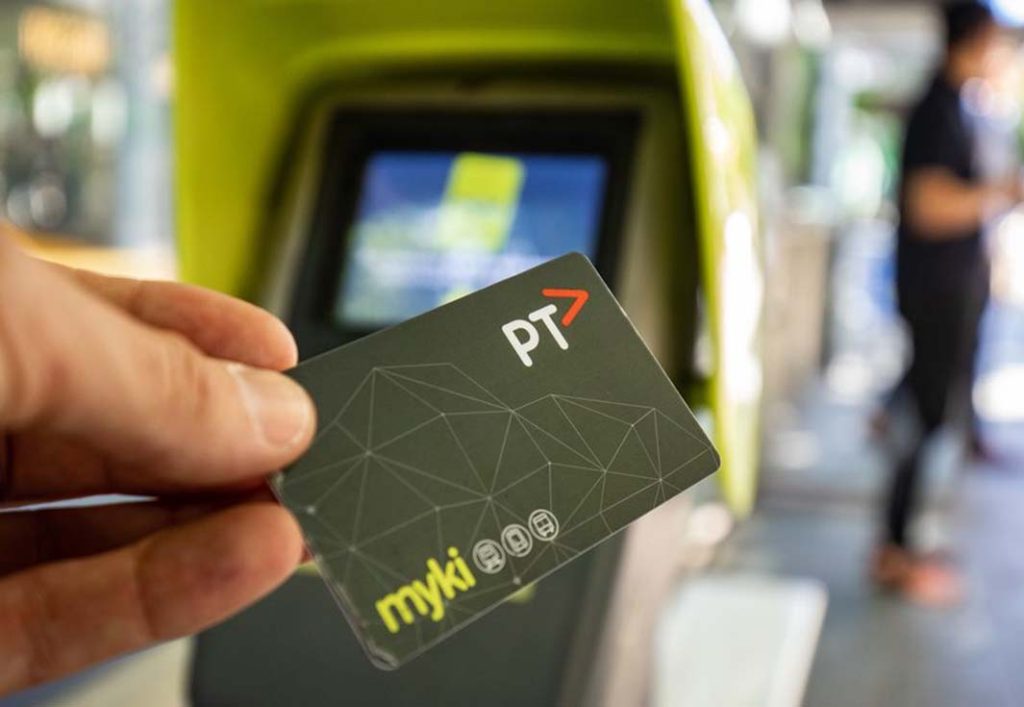
Using a myki card is simple and intuitive, thanks to Melbourne’s touch-on/touch-off system. To begin a journey on public transport, travelers need to touch their myki card on the card reader located at the entrance of trams, train stations, or buses. This action deducts the appropriate fare from the card’s balance and validates the start of the journey.
Upon reaching their destination, travelers must touch their myki card on the card reader again to complete their journey. This touch-off action ensures that the correct fare is calculated based on the distance traveled and helps prevent overcharging. It’s important to remember to touch off at the end of each journey to avoid being charged a default maximum fare.
Top-Up and Management
Managing a myki card is convenient and flexible, allowing travelers to monitor their balance, top up credit, and view their travel history online or via the myki mobile app. Additionally, travelers can set up auto top-up functionality to ensure their myki card always has sufficient credit for their journeys, eliminating the need to manually add credit.
The myki card is an indispensable tool for navigating Melbourne’s public transport network. With its ease of use, flexibility, and range of concessions, the myki card provides travelers with a convenient way to explore the city and its surrounding areas. Whether you’re a visitor exploring Melbourne’s attractions or a local commuting to work, having a myki card ensures seamless travel experiences throughout the city.
From trams and trains to buses and bicycles, Melbourne offers a variety of transportation options to suit every traveler’s needs. By following the tips and recommendations outlined in this guide, you can navigate the city with confidence and make the most of your time exploring all that Melbourne has to offer.
Whether you’re cruising along on a tram, zipping through the city on a bike, or taking in the scenic views from a train, Melbourne’s transportation system ensures a seamless and enjoyable travel experience.
